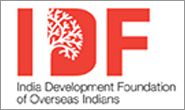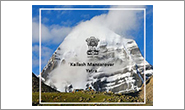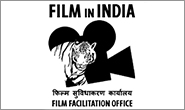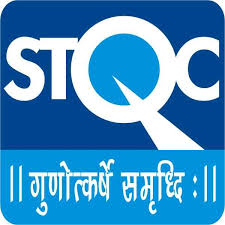Joint Statement between the Republic of India and the People's Republic of China on Building a Closer Developmental Partnership
09/19/2014
1. At the invitation of H.E. Pranab Mukherjee, President of the Republic of India, H.E. Xi Jinping, President of the People's Republic of China, is on a state visit to India from 17 to 19 September 2014. During the visit, President Xi Jinping met with President Pranab Mukherjee and held talks with H.E. Narendra Modi, Prime Minister of India.
2. The leaders evaluated positively the progress of India-China relations over the recent years, and noted that both sides always consider their relations from a strategic and overall perspective. The two sides reaffirmed their commitment to abide by the principles and consensus both had agreed to, and further consolidate the Strategic and Cooperative Partnership for Peace and Prosperity on the basis of the Five Principles of Peaceful Coexistence and mutual respect and sensitivities for each other's concerns and aspirations. They agreed that as two large developing and emerging economies, their developmental goals are interlinked and should be pursued in a mutually supportive manner. Recognizing that their respective growth processes are mutually reinforcing, they agreed to leverage mutual complementarities and build a closer developmental partnership. The leaders agreed to make this developmental partnership a core component of the Strategic and Cooperative Partnership for Peace and Prosperity. This developmental partnership is conducive not only to the common interests of both sides, but also to stability and prosperity of the region and the world.
3. The two sides decided to strengthen political communication, deepen strategic trust as well as intensify political dialogue and consultations at all levels. With this objective, they also agreed upon regular visits at the level of Heads of State/Government. The leaders of the two countries will continue to meet on the side-lines of multilateral fora as frequently as possible. President Xi Jinping welcomed Prime Minister Narendra Modi’s early visit to China. Prime Minister Modi thanked President Xi Jinping for that and said he accepted the invitation from the Chinese side with pleasure and looked forward to visiting China at an early date.
4. The leaders assigned the Strategic Economic Dialogue (SED) to explore new areas for economic cooperation in crosscutting fields including industrial investment, infrastructure development, energy conservation and environment protection, high-tech industry, clean energy and sustainable urbanization. The SED will explore designing joint demonstration projects and initiatives in smart cities. In this regard, it was agreed that a city in each country would be identified for a smart city demonstration project.
5. At its 10th meeting held recently, the India-China Joint Economic Group reaffirmed its determination to expand and diversify bilateral trade and economic cooperation. The two sides agreed to take positive steps towards rebalancing bilateral trade and addressing the existing structural imbalance in trade that has a bearing on its sustainability. Such measures will include cooperation on pharmaceutical supervision including registration, speedier phytosanitary negotiations on agro-products for two-way trade, stronger links between Indian IT companies and Chinese enterprises, and increasing services trade in tourism, films, healthcare, IT and logistics. India appreciated China's willingness to import greater number of Indian films for commercial release in its market. The two sides signed the Five-Year Development Program for Economic and Trade Cooperation that lays out a roadmap for comprehensively deepening and balancing bilateral economic engagement.
6. The Chinese side announced the establishment of two industrial parks in India, one in Gujarat and one in Maharashtra. The Chinese side would also endeavor to realize an investment of US$ 20 billion in India in the next 5 years in various industrial and infrastructure development projects. India welcomes Chinese enterprises to participate in its manufacturing and infrastructure projects. Each side will also facilitate companies of the other to invest and operate in their own country. The two sides will work together to forge production and supply chain linkages, which will help develop a more broad-based and sustainable economic partnership.
7. The leaders also noted with appreciation the progress achieved in railways cooperation and conclusion of the Memorandum of Understanding and Implementation Plan on Cooperation in Railways. It was agreed that: (i) the two sides will cooperate to identify the technical inputs required to increase speed on the existing railway line from Chennai to Mysore via Bangalore; (ii) the Chinese side will provide training in heavy haul for 100 Indian railway officials; (iii) the two sides will cooperate in areas such as redevelopment of existing railway stations and establishment of a railway university in India; and (iv) the Indian side will actively consider cooperating with the Chinese side on a High Speed Rail project.
8. The two sides agreed to hold the 7th India-China Financial Dialogue in New Delhi this year to enhance cooperation between Indian and Chinese financial regulators. The Indian side approved, in principle, the request of the Bank of China to open a branch in Mumbai, for which the Chinese side expressed its appreciation.
9. The two sides agreed to initiate a dialogue mechanism between the Department of Economic Affairs of the Government of India and the Development Research Centre of the State Council of the People's Republic of China.
10. As large developing countries committed to promoting the use of clean energy, India and China believe that expansion of civil nuclear energy program is an essential component of their national energy plans to ensure energy security. The two sides will carry out bilateral cooperation in civil nuclear energy in line with their respective international commitments, including working level consultations between the Department of Atomic Energy of India and the China Atomic Energy Authority.
11. Recognizing deep civilizational linkages between India and China, the two sides agreed to launch the India-China Cultural Exchange Initiative with a view to further promoting the bonds of cultural and people-to-people contacts. Key elements of this will include:
i. The leaders decided to designate 2015 as the "Visit India Year" in China and 2016 as the "Visit China Year" in India. Under this, the two sides will carry out a series of promotional activities to boost two-way tourism flows and strengthen people-to-people bonds. The Chinese side agreed to assist India to promote its tourism products and routes in China, which are related to the historical travels of the Chinese monk-scholar Xuan Zang to India in the 7th century AD.
ii. Recognizing the significance of youth exchanges in increasing mutual understanding, the leaders agreed to continue with the annual exchange of 200 youth from 2015 to 2019.
iii. An MoU was signed to provide the framework for exchanges between the museums and other cultural institutions of the two countries. An exhibition of Indian Buddhist Art and another exhibition of Contemporary Indian Art will be organized in China in 2014-15. Similar exhibitions will travel from China to India. China will be the partner country at the Delhi International Book Fair 2016.
iv. The two sides agreed to establish ministerial level consultations to intensify cooperation in the field of culture.
v. The project on mutual translation of classics and contemporary works will be speeded up.
vi. The two sides will collaborate to strengthen exchanges in movies, broadcasting and television shows. An Audio-Visual Co-production MoU was signed to facilitate joint production of movies. China will be the guest country at the Indian International Film Festival 2014.
vii. The two sides will mutually support the teaching of Indian languages in China and of Chinese language in India.
12. The agreements on establishing a provincial partnership between Gujarat and Guangdong Province and Sister-City relationships between Mumbai-Shanghai and Ahmedabad-Guangzhou were signed.
13. The Indian side appreciated the support and cooperation by the Ministry of Foreign Affairs and the local government of Tibet Autonomous Region of the People's Republic of China to Indian pilgrims for the Kailash Manasarovar Yatra (Gang Renpoche and Mapam Yun Tso Pilgrimage). For further promotion of the two countries' religious exchange and facilitating the Indian pilgrims, and upon the request of the Indian side, the Chinese side decided to open a new route for the Yatra through Nathu La Pass, for which the Indian side expressed its welcome and appreciation.
14. The Indian side expressed appreciation to China for providing flood-season hydrological data and the assistance in emergency management. The two sides will further strengthen cooperation through the Expert-Level Mechanism on the provision of flood-season hydrological data and emergency management, and exchange views on other issues of mutual interest.
15. Both sides reiterated their willingness to proactively resolve all outstanding differences based on the Five Principles of Peaceful Coexistence through friendly negotiation without letting them affect the overall development of bilateral relations. The two sides reaffirmed their commitment to consolidate the Strategic and Cooperative Partnership for Peace and Prosperity on the basis of the principle of mutual and equal security and mutual sensitivity for each other's concerns and aspirations.
16. During the visit, the two sides exchanged views on the India-China boundary question and reiterated their commitment to seek a fair, reasonable and mutually acceptable solution, proceeding from the overall interests of bilateral relations. Recalling the Agreement on the Political Parameters and Guiding Principles for the Settlement of the Boundary Question signed in April 2005, both sides reiterated their commitment to an early settlement of the boundary question and expressed their conviction that this will advance basic interests of the two countries and shall, therefore, be pursued as a strategic objective. They reaffirmed the utility and significance of the mechanism of Special Representatives for seeking a political settlement of the boundary question and of the Working Mechanism for Consultation and Coordination on India-China Border Affairs for handling border related matters.
17. Peace and tranquility on the India-China border areas was recognized as an important guarantor for the development and continued growth of bilateral relations. Pending a final resolution of the boundary question, the two sides would continue to make joint efforts to maintain peace and tranquility in the border areas.
18. The two sides noted that improved bilateral military ties are conducive to building mutual trust and confidence. Both sides agreed to a regular exchange of visits between the defence ministries and military leaders, so as to expand pragmatic cooperation in the relevant fields. They also agreed to hold the fourth joint army training at a mutually convenient time, hold navy/airforce joint exercise at a proper time, and strengthen cooperation in such areas as peace-keeping, counter-terrorism, naval escort, maritime security, humanitarian rescue, disaster mitigation, personnel training, and think tank communication.
19. The two sides decided to hold the first round of maritime cooperation dialogue within this year to exchange views on maritime affairs and security, including anti-piracy, freedom of navigation and cooperation between maritime agencies of both countries. They also agreed to hold the consultations on disarmament, non-proliferation and arms control at an early date.
20. The two sides noted the progress made in promoting cooperation under the framework of the BCIM (Bangladesh, China, India, Myanmar) Economic Corridor. Both sides recalled the first meeting of the Joint Study Group of BCIM Economic Corridor and agreed to continue their respective efforts to implement understandings reached at the meeting.
21. The two sides believe that the 21st century should be marked by peace, security, development and cooperation. As developing countries, India and China have common interests on several issues of global importance like climate change, Doha Development Round of WTO, energy and food security, reform of the international financial institutions and global governance. This is reflected in close cooperation and coordination between the two sides within the BRICS, G-20 and other fora.
22. The promotion of a multi-polar world, economic globalization, cultural diversity and information revolution are high on the global agenda. The two sides will make joint efforts to democratize international relations and strengthen the central role of the United Nations in promoting global peace, security and development.
23. The two sides support a comprehensive reform of the United Nations, including recognizing the imperative of increased participation of developing countries in UN's affairs and governance structures, so as to bring more effectiveness to the UN. China attaches great importance to India's status in international affairs as a large developing country, and understands and supports India's aspiration to play a greater role in the United Nations including in the Security Council.
24. Both sides reiterated their resolute opposition to terrorism in all its forms and manifestations with 'zero tolerance', and committed themselves to cooperate on counter-terrorism. They also emphasized the need to implement all relevant UN resolutions, in particular UNSC resolutions 1267, 1373, 1540 and 1624.
25. The two sides recognized that climate change is a common concern of mankind and one of the greatest global challenges in the 21st century, which needs to be addressed through international cooperation and in the context of sustainable development. The two sides will work together with other countries to advance the multilateral negotiation to achieve a balanced, comprehensive and equitable agreement under the UN Framework Convention on Climate Change in 2015, with a view to enhancing the full, effective and sustained implementation of the Convention in the post-2020 period. The two sides reaffirmed that the 2015 agreement shall be in full accordance with the principles, provisions and structure of the Convention, in particular the principle of equity, common but differentiated responsibilities and respective capabilities.
26. The two sides expressed satisfaction at the enhanced bilateral engagement at the working level on wide-ranging issues of regional and global significance. Bilateral consultations on Afghanistan, West Asia, Africa, Central Asia and Counter-terrorism have already been held and found to be meaningful.
27. The Asia-Pacific region plays an increasingly important role in global affairs. The two sides are of the view that the current priority of this region is to maintain peace and stability of the region, promote regional common development, and establish an open, transparent, equal and inclusive framework of security and cooperation based on the observance of the basic principles of international law. The two sides support multilateral cooperation mechanisms in Asia and agree to broaden cooperation in the relevant regional organizations.
28. President Xi Jinping expressed his appreciation to the government and people of India for their warm hospitality. President Xi Jinping invited President Pranab Mukherjee to visit China at a mutually convenient time. President Pranab Mukherjee accepted the invitation with pleasure.
New Delhi
September 19, 2014





























